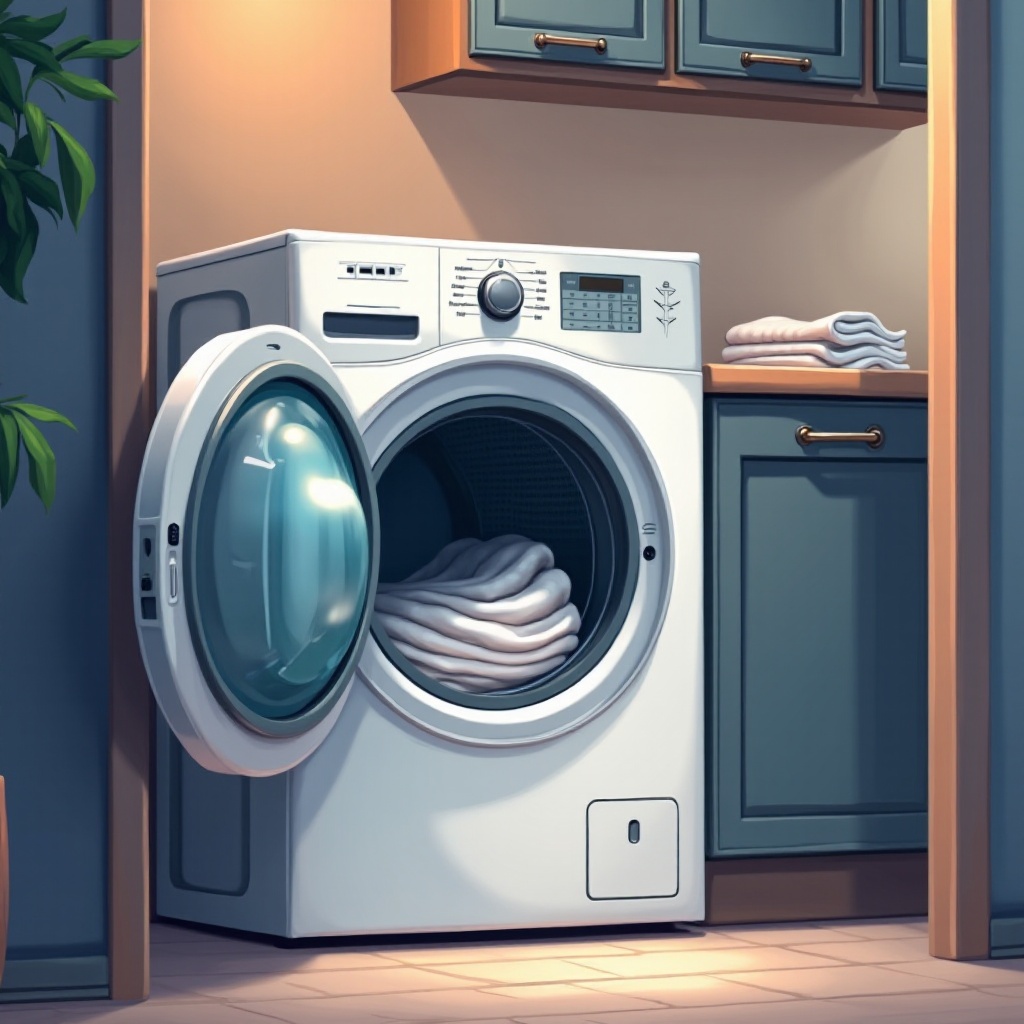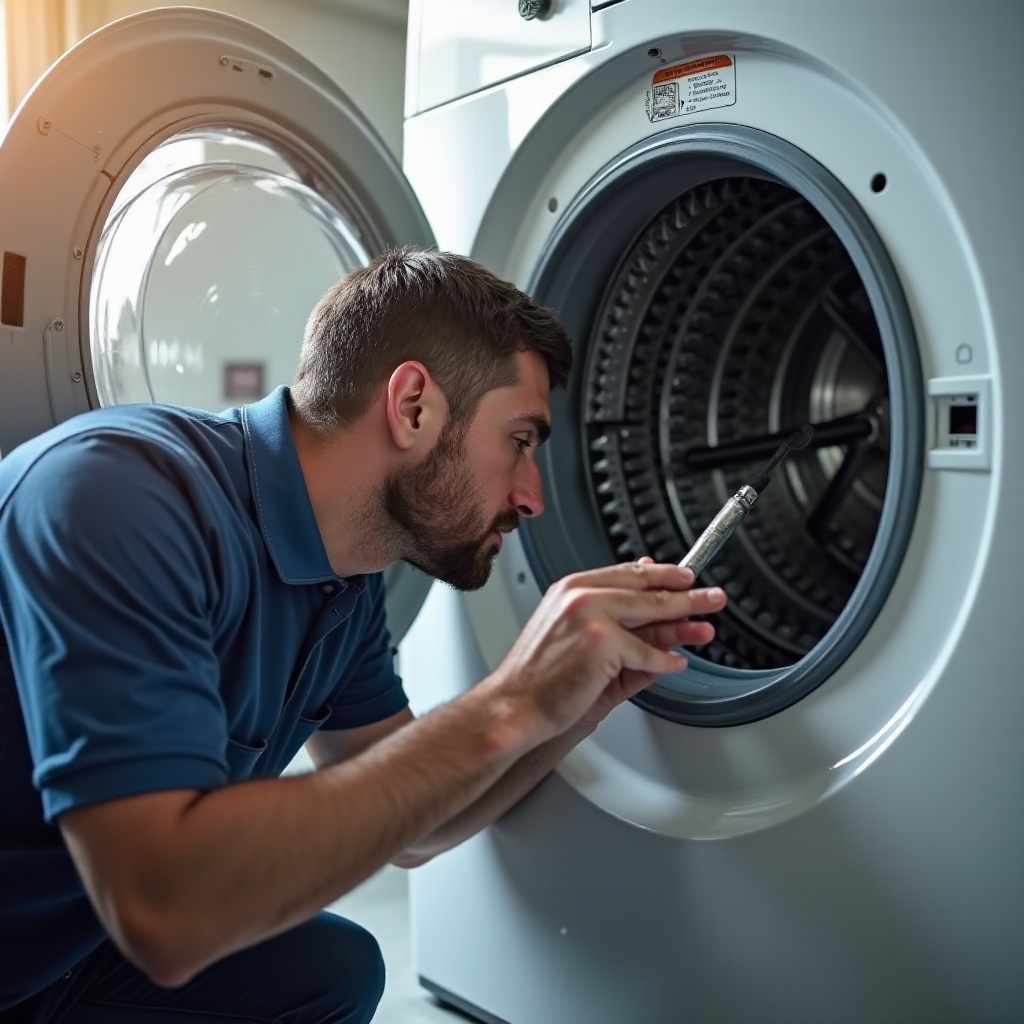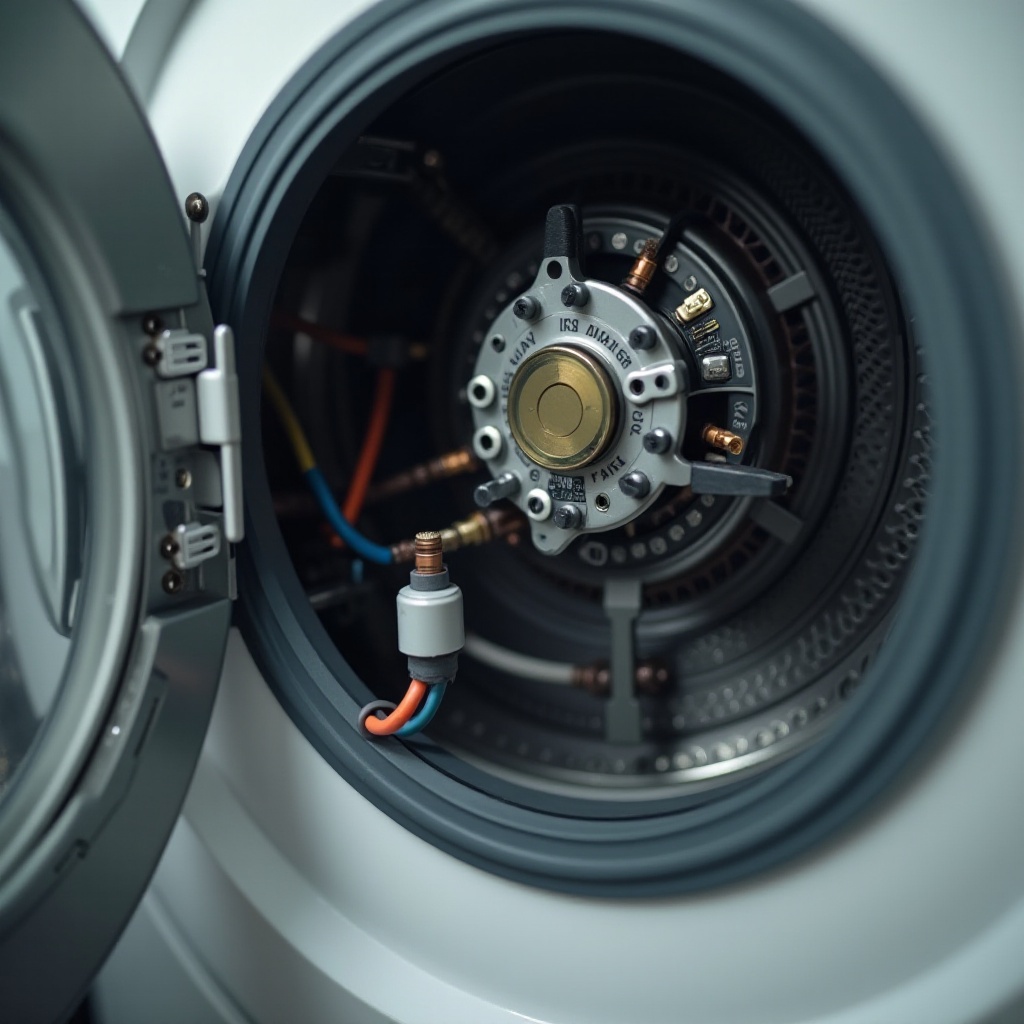Introduction
A non-spinning washing machine can throw off your entire routine. Fortunately, diagnosing and fixing the problem can often be done without professional help. This guide provides practical solutions to common issues that may prevent your washing machine drum from spinning. Equipped with this information, you can troubleshoot and resolve many problems on your own, saving both time and money.

Understanding the Problem
To effectively address a washing machine that won't spin, understanding the potential causes is crucial. Identifying why the drum remains still will guide your troubleshooting process.
Common causes include:
- Power supply issues: Your machine might not receive power due to a blown fuse or tripped breaker.
- Mechanical obstructions: Objects like coins or buttons can get trapped, preventing the drum from moving.
- Electrical or sensor malfunctions: Faulty door locks or sensor failures might be stopping the spin cycle.
By pinpointing these common issues, you can better determine the appropriate solution to fix your washer.
Initial Checks and Basic Fixes
Before diving into more complex solutions, start with basic checks and fixes. These steps can often resolve the issue without further intervention.
Verify Power Source: Ensure your washing machine is securely plugged in and check that the outlet is working by testing another device.
Check the Washer Door: The door must be completely closed. Inspect the door latch and lock for proper engagement.
Balance the Load: An uneven load distribution can prevent spinning. Rearrange clothes evenly around the drum.
Completing these checks may quickly resolve the issue and restore your washing machine's functionality.
Mechanical Issues and Solutions
If basic checks don't solve the problem, you might be facing mechanical issues. Mechanical failures, especially related to the drive belt or motor coupling, can often stop your washer from spinning.
Drive Belt Inspection
The drive belt's role in turning the drum is crucial, and if it's worn or broken, your washer won't spin.
- Inspect the Belt: Unplug the machine, remove the back panel, and check for tears or breakages.
- Replace the Belt: Purchase a replacement matching your washer model and follow instructions for installation.
Motor Coupling Check
The motor coupling connects the motor to the transmission and can wear over time.
- Examine the Coupling: Check for cracks or damage.
- Replace If Necessary: Buy a new coupling appropriate for your washer model if needed.
These mechanical inspections and replacements often resolve problems stemming from components wear and tear.

Electrical Components Troubleshooting
If mechanical inspections do not fix the spinning issue, electrical components could be the cause. Issues with the lid switch assembly or control board may be the culprits.
Lid Switch Assembly Test
The lid switch ensures the machine only runs when the door is shut, an essential safety feature that sometimes fails.
Test the Lid Switch: Use a multimeter to verify its functionality. If faulty, replace it.
Switch Replacement: Follow your model's specific instructions to change the switch.
Control Board and Timer Check
These components control the spin cycle duration and functionality.
Inspect Connections: Ensure wiring to and from the control board is intact.
Professional Consultation: Replacing a control board is complex and may require professional help.
Addressing these electrical elements can alleviate spin issues, especially when previous steps have been disregarded in troubleshooting.

When to Call a Professional
While many issues are fixable at home, some might necessitate professional intervention. If your washer continues to malfunction or if handling complex repairs feels overwhelming, professionals can efficiently diagnose and remedy the problem.
Consider the costs of parts and labor against potential benefits, along with your comfort level in dealing with complex repairs. A professional can often provide peace of mind and quicker solutions.
Preventive Maintenance Tips
Maintaining your washing machine proactively can help avoid future spin cycle issues.
Regularly Clean Filters and Drains: Prevent clogging with lint and debris.
Avoid Overloading: Distribute laundry loads evenly to prevent strain.
Check Hoses and Connections: Regularly inspect supply hoses for wear or leaks.
Adopting these practices will help keep your machine running smoothly and prolong its usability.
Conclusion
A non-functioning spin cycle in your washing machine can be disruptive, but many issues can be identified and fixed at home. This guide outlines practical steps to diagnose and resolve common spinning problems. If challenges persist despite your best efforts, seeking professional help is always a viable option to ensure appliance longevity and performance.
Frequently Asked Questions
Why does my washing machine drum not spin?
Various issues can cause this, including power supply problems, mechanical blockages, or electrical component failures.
Can I fix a washing machine spin issue myself?
Yes, many common spin issues can be resolved with basic tools and guidance. However, some problems may require professional repair.
What are common parts that cause spin problems in washers?
Key parts include the drive belt, motor coupling, lid switch assembly, and control board. Inspecting these components can often lead to solutions.
